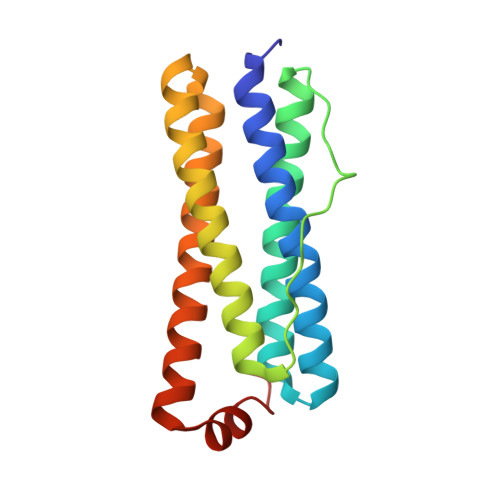Three Aromatic Residues are Required for Electron Transfer during Iron Mineralization in Bacterioferritin.
Bradley, J.M., Svistunenko, D.A., Lawson, T.L., Hemmings, A.M., Moore, G.R., Le Brun, N.E.(2015) Angew Chem Int Ed Engl 54: 14763-14767
- PubMed: 26474305
- DOI: https://doi.org/10.1002/anie.201507486
- Primary Citation of Related Structures:
4XKS, 4XKT, 4XKU - PubMed Abstract:
Ferritins are iron storage proteins that overcome the problems of toxicity and poor bioavailability of iron by catalyzing iron oxidation and mineralization through the activity of a diiron ferroxidase site. Unlike in other ferritins, the oxidized di-Fe(3+) site of Escherichia coli bacterioferritin (EcBFR) is stable and therefore does not function as a conduit for the transfer of Fe(3+) into the storage cavity, but instead acts as a true catalytic cofactor that cycles its oxidation state while driving Fe(2+) oxidation in the cavity. Herein, we demonstrate that EcBFR mineralization depends on three aromatic residues near the diiron site, Tyr25, Tyr58, and Trp133, and that a transient radical is formed on Tyr25. The data indicate that the aromatic residues, together with a previously identified inner surface iron site, promote mineralization by ensuring the simultaneous delivery of two electrons, derived from Fe(2+) oxidation in the BFR cavity, to the di-ferric catalytic site for safe reduction of O2.
Organizational Affiliation:
Centre for Molecular and Structural Biochemistry, School of Chemistry, University of East Anglia, Norwich Research Park, Norwich, NR4 7TJ (UK).















